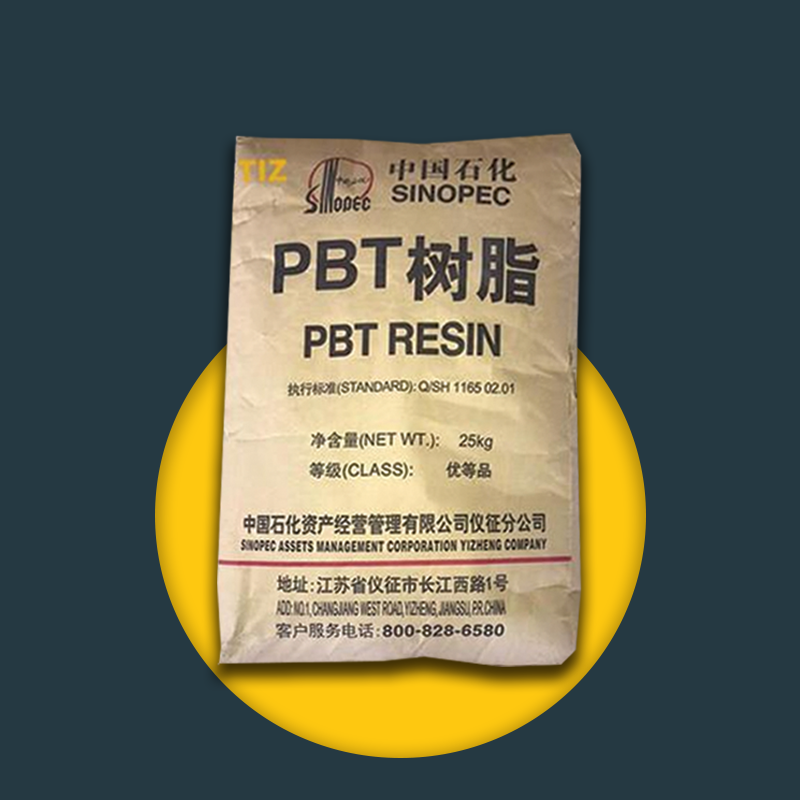Description
Brand: SINOPEC
Country of manufacture: China
Application :
The most common use of PBT is in the production of engineering plastics and thermoplastic resins. Therefore, this polymer is mostly used in automotive, electrical and electronic industries, household appliances and many other industries.
What is PBT?
Polybutylene terephthalate, widely used engineering thermoplastic in industries
What is polybutylene terephthalate?
Polybutylene terephthalate (PBT) is a semi-crystalline engineering thermoplastic material. It has the same properties and composition as polyethylene terephthalate (PET). It is a member of the polyester polymer family.
Production:
PBT is produced by polycondensation of terephthalic acid or dimethyl terephthalate with 1,4-butanediol using special catalysts.
The second most used polyester after PET (Polyethylene Terephthalate) is Polybutylene Terephthalate. Polybutylene Terephthalate or PBT (Polybutylene Terephthalate) is a semi-crystalline engineering thermoplastic that has exceptional resistance to solvents, very low shrinkage, high stability It has great dimensions, very little wear and excellent thermal resistance up to temperatures of 150 degrees C. It should also be said that PBT can be produced in flame retardant grades with the help of special additives, and with the addition of glass fibers to this polymer, its thermal stability is up to temperatures increases by 200°C. PBT is inherently resistant to ultraviolet rays and special additives must be added to increase its stability against sunlight. All the above-mentioned features lead to the development of PBT applications. Especially in electrical and electronic industries, due to its very high dielectric strength, which we will learn more about later.
Polybutyl terephthalate is processed. This thermoplastic also has a high molecular weight and was first produced by the British Royal Chemical Industries. Polybutylene terephthalate is used in the manufacturing and automotive industries to make car parts, produce electrical and electronic parts, and other equipment with industrial applications. The thermal resistance of polybutylene terephthalate is less compared to polyethylene terephthalate (PET), however, the processability of this compound is much easier. PBT with lower molecular weight is generally used in injection molding and PBT with higher molecular weight is used in extrusion and blow molding. In fact, the use of PBT is relative to its molecular weight. PBT has high chemical stability, and this is the reason for its wide application in cases that require both thermal and chemical resistance, such as filtering. Polybutylene terephthalate is generally measured using intrinsic viscosity or melt flow rate. Materials with an intrinsic viscosity greater than one are used in extrusion and blow molding, while compounds with a lower viscosity are used in injection molding.
The frame of electronic, electrical and medical devices
Automotive and building lighting housings, especially LED lamps
Other car parts such as side mirror frame, door handle, fuse box, some components of fuel system and starter
Connectors, sockets and fuses
Fibers and clothing
Some computer keyboards
Covers and parts of jet skis and shoes and ski boards
Properties of PBT:
The polymer shows excellent mechanical and electrical properties. Review the key properties of this polyester material discussed below.
It has excellent features resistant to stains and machining
Enables efficient use of materials to reduce weight and cost
It offers excellent short-term mechanical properties such as high strength, toughness and stiffness as well as good practicality.
It provides creep resistance, dimensional stability and low moisture absorption characteristics.
Global Market:
The demand for PBT after the economic crisis in 2009 that caused Various industries reduce the production of some materials, it has regained its place. With population growth and innovations in the automotive, electrical and electronics industries, the use of PBT will steadily increase. This is evident in the automotive industry due to its ever-increasing need for lighter, more resistant, low-maintenance and competitive materials.
The use of engineering grade plastics such as PBT is increasing due to issues surrounding metal corrosion and the high cost of minimizing this problem. Many designers are looking for an alternative to metals. They have turned to plastic as a solution. A new grade of PBT that provides better results in laser welding. has been created and offers a new solution for welded parts.
Polybutylene terephthalate grades
Among the various grades of PBT, we can mention polybutylene terephthalate with a small twist, twisted polybutylene terephthalate, injection grade, long-burning grade resin, polybutylene terephthalate filled with glass fibers, etc.


Reviews
There are no reviews yet.